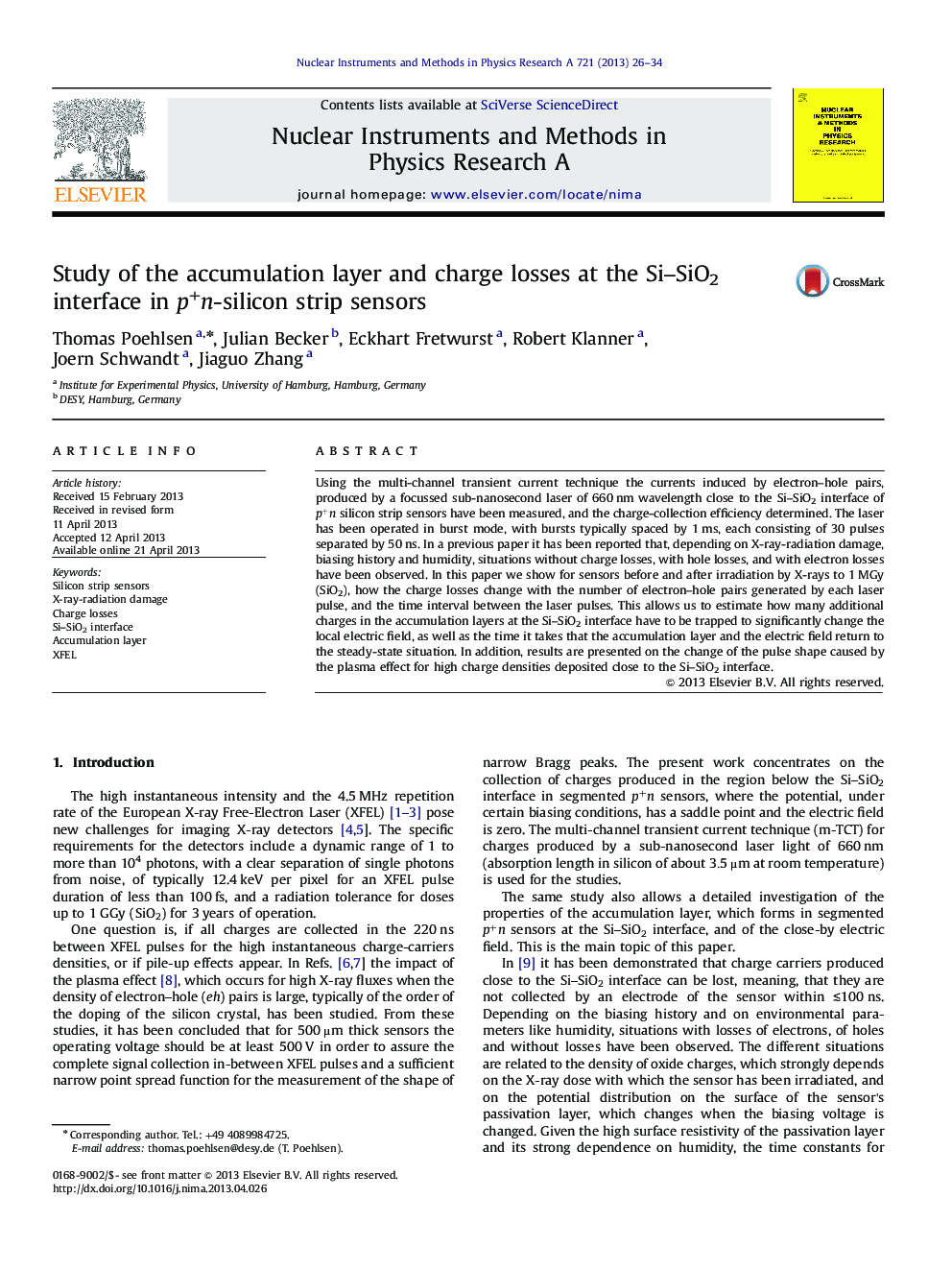| Article ID | Journal | Published Year | Pages | File Type |
|---|---|---|---|---|
| 1822808 | Nuclear Instruments and Methods in Physics Research Section A: Accelerators, Spectrometers, Detectors and Associated Equipment | 2013 | 9 Pages |
Using the multi-channel transient current technique the currents induced by electron–hole pairs, produced by a focussed sub-nanosecond laser of 660 nm wavelength close to the Si–SiO2 interface of p+np+n silicon strip sensors have been measured, and the charge-collection efficiency determined. The laser has been operated in burst mode, with bursts typically spaced by 1 ms, each consisting of 30 pulses separated by 50 ns. In a previous paper it has been reported that, depending on X-ray-radiation damage, biasing history and humidity, situations without charge losses, with hole losses, and with electron losses have been observed. In this paper we show for sensors before and after irradiation by X-rays to 1 MGy (SiO2), how the charge losses change with the number of electron–hole pairs generated by each laser pulse, and the time interval between the laser pulses. This allows us to estimate how many additional charges in the accumulation layers at the Si–SiO2 interface have to be trapped to significantly change the local electric field, as well as the time it takes that the accumulation layer and the electric field return to the steady-state situation. In addition, results are presented on the change of the pulse shape caused by the plasma effect for high charge densities deposited close to the Si–SiO2 interface.
